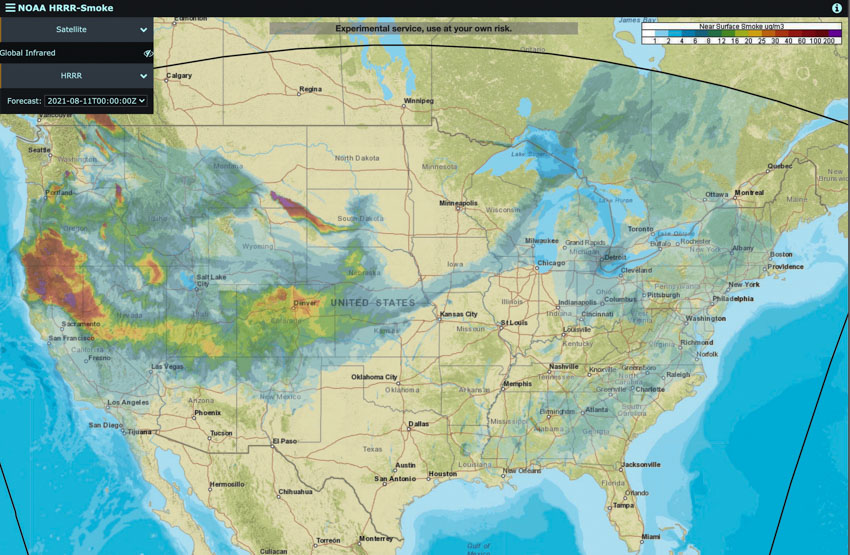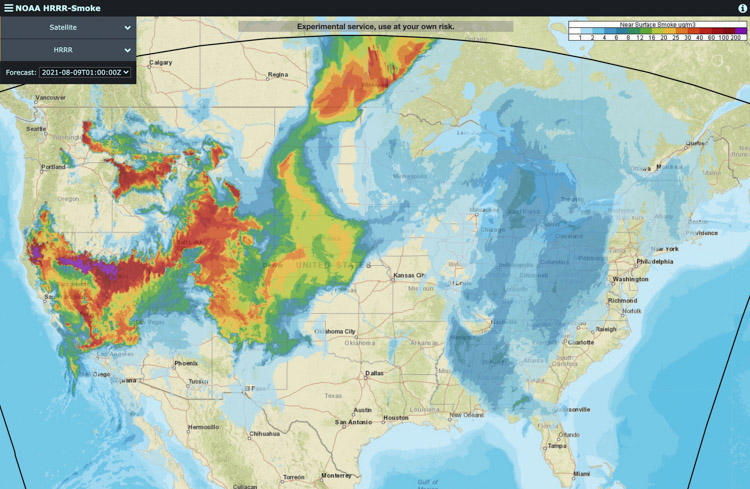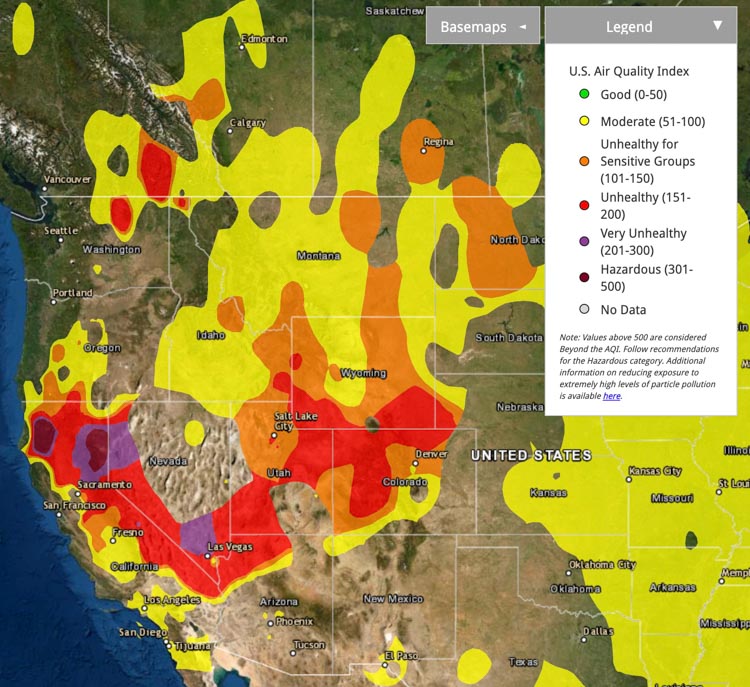
From the San Francisco Chronicle, Aug. 13, 2021
The presence of wildfire smoke last year during the pandemic may have been responsible for at least 19,000 additional coronavirus cases on the West Coast, and 700 subsequent deaths, a new study shows.
The study, published Friday in the journal Science Advances, offers the most detailed accounting yet of how the devastating 2020 wildfire season is believed to have amplified the coronavirus outbreak. It traces increases in infections to periods of smoke in more than 50 counties in California, Oregon and Washington.
While a correlation between wildfire smoke and COVID-19 doesn’t prove causation, the study’s authors say the tie is no coincidence. Plenty of research since the start of the pandemic has suggested that exposure to smoke’s primary unhealthy component PM 2.5, which refers to particulate matter that is 2.5 micrometers in size or smaller, compromises people’s immunity and increases susceptibility to COVID-19. Scientists also hypothesize that the virus may be spread by the particles.
The team’s models crunched coronavirus numbers in 92 counties during non-smokey periods from March 15 to Dec. 16 and how these numbers changed when wildfire smoke brought particulate pollution. The area that the researchers examined covered 95% of the population in California, Oregon and Washington. They excluded areas that did not have sufficient data for modeling.










